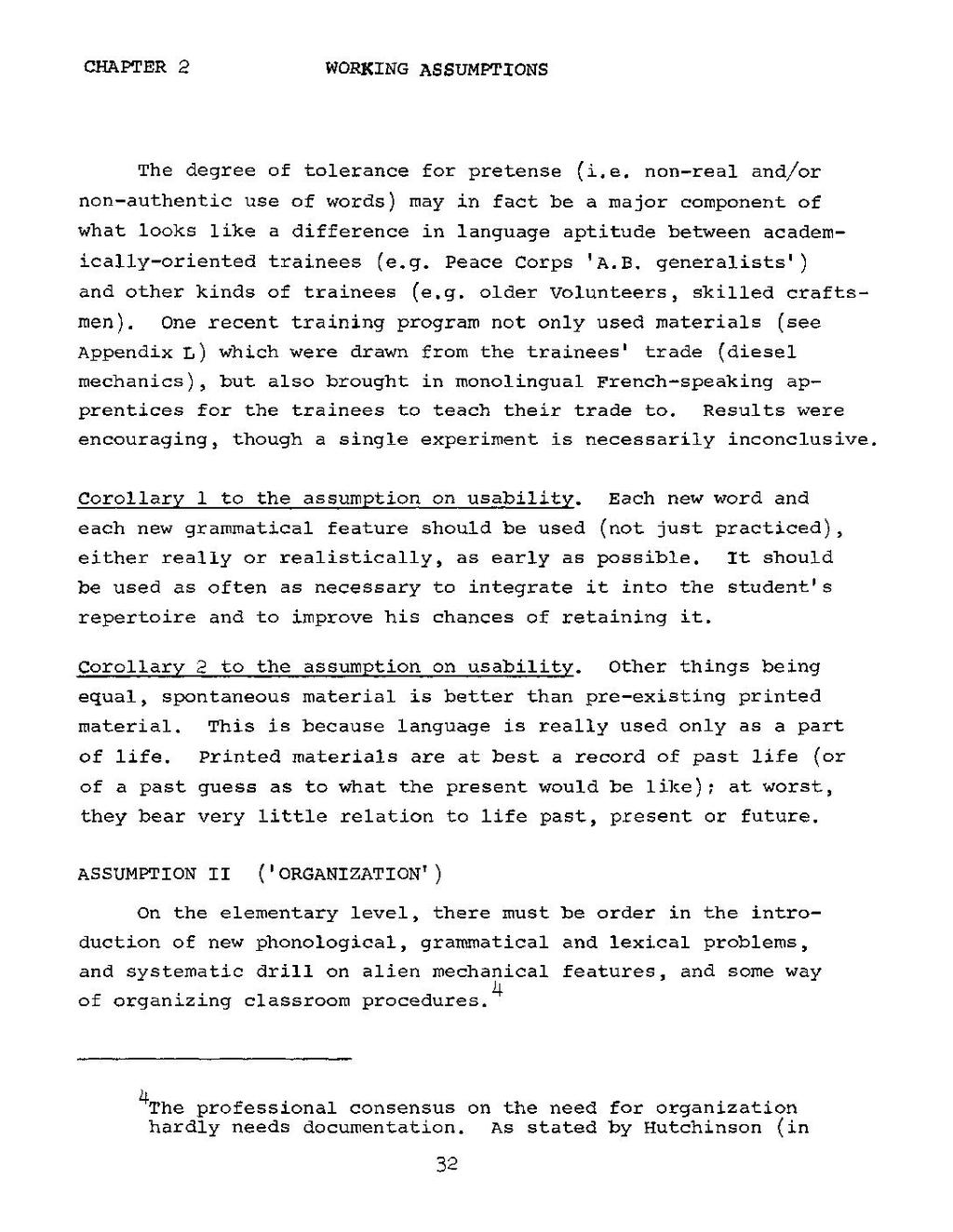The degree of tolerance for pretense (i.e. non-real and/or non-authentic use of words) may in fact be a major component of what looks like a difference in language aptitude between academically-oriented trainees (e.g. Peace Corps 'A.B. generalists') and other kinds of trainees (e.g. older Volunteers, skilled craftsmen).
One recent training program not only used materials (see Appendix L) which were drawn from the trainees' trade (diesel mechanics), but also brought in monolingual French-speaking apprentices for the trainees to teach their trade to. Results were encouraging, though a single experiment is necessarily inconclusive.
Corollary 1 to the assumption on usability. Each new word and each new grammatical feature should be used (not just practiced), either really or realistically, as early as possible. It should be used as often as necessary to integrate it into the student's repertoire and to improve his chances of retaining it.
Corollary 2 to the assumption on usability. other things being equal, spontaneous material is better than pre-existing printed material. This is because language is really used only as a part of life. Printed materials are at best a record of past life (or of a past guess as to what the present would be like); at worst, they bear very little relation to life past, present or future.
ASSUMPTION II ('ORGANIZATION')
On the elementary level, there must be order in the introduction of new phonological, grammatical and lexical problems, and systematic drill on alien mechanical features, and some way of organizing classroom procedures.[1]
- ↑ The professional consensus on the need for organization hardly needs documentation. As stated by Hutchinson (in
32
